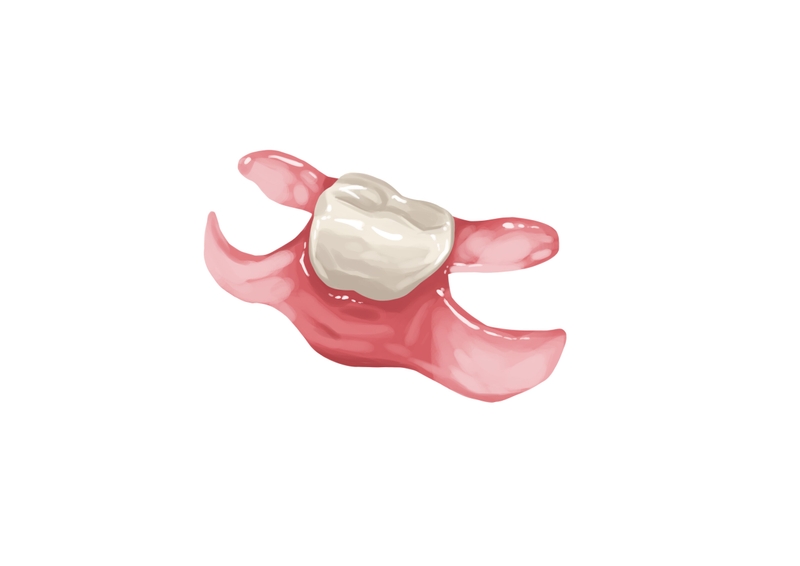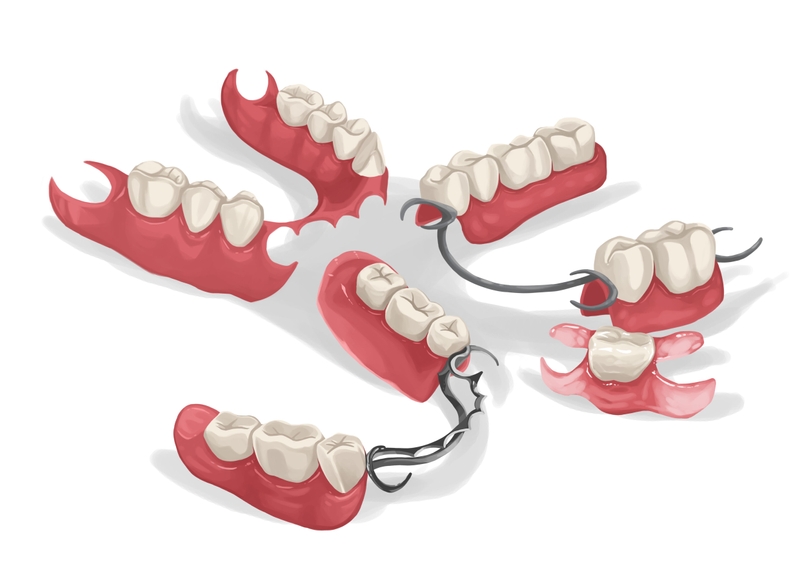- Flexible dentures are partial dentures made of thermoplastic material or nylon. This gives them a more natural appearance and makes them more comfortable than traditional dentures.
- Flexible dentures take less time to fabricate but they are more difficult to repair. Such dentures are also susceptible to plaque.
- If your flexible dentures do not fit you, you may not be able to reline them.
Use Authority Dental to find a low-cost denture dentist near you, or get a dental plan and save big on all dental procedures, including dentures.
Which dentures are better for you: flexible or traditional? Here's everything you need to know.
Flexible partial denture: definition

Picture by Authority Dental under CC 2.0 license
Flexible partial dentures are a one type of partial dentures. Traditional dentures are made of a hard acrylic material, which makes them inflexible. As their name implies, a flexible partial can bend slightly. This is because they are made of nylon or other thermoplastics.
A “thermoplastic” is a substance that becomes plastic when heated and then hardens when it cools. The substance is able to repeat the process multiple times. Synthetic resins are common thermoplastics.
Flexible partials look similar to traditional particles, but are much more thin. They also do not have metal clasps that hook around adjacent teeth for support. If there are clasps present, they are made of the same thin thermoplastic as the rest of the partial.
Benefits and disadvantages of flexible dentures
There are always advantages and disadvantages to every type of tooth replacement option. Flexible partials are no different.
Natural appearance
Quick fabrication
Durable
Comfortable
Difficult to repair
Susceptible to build up
Not permanent
Flexible partial dentures cost
A flexible partial may range in price from $700 to $3000 depending on the dental lab and the severity of your dental condition.
A big determining cost factor is your location. Areas with higher costs of living often charge more for flexible partials. The cost will also depend on what brand the partial is and how many teeth need to be replaced.
Traditional partial dentures vs. flexible partial dentures

Picture by Authority Dental under CC 2.0 license
Both traditional and flexible partial dentures have the same goal: to replace missing teeth. They both function the same way, but have some noticeable differences.
A traditional partial denture is going to be more bulky and less comfortable than a flexible partial denture. It will also be more prone to breaking if dropped. However, a traditional partial can be fixed if broken, and it can be relined if it starts to become loose.
A flexible partial denture is more thin, so patients often find that it is much more comfortable. Since it is thin and does not have metal clasps, it is also less noticeable to others. While a flexible partial is more durable if dropped, they typically cannot be repaired if they do break. They also cannot be relined, nor can their plastic clasps be adjusted. This means that if a flexible partial no longer fits, you’ll have to get a new one.
TRADITIONAL PARTIALS
Less comfortable
Prone to breaking
Can be fixed and relined
More noticeable
FLLEXIBLE PARTIALS
More comfortable
Durable
Cannot be fixed or relined
Less noticeable
FAQ
Are flexible dentures comfortable?
Flexible dentures are more comfortable than traditional dentures. The thermoplastic material allows them to be thinner, compared to bulky traditional dentures. Since the material is flexible, it can be more comfortable on the gum tissue as well.
Keep in mind that other tooth replacement options may be even more comfortable. Bridges and implants feel like natural teeth and do not require all the material that partials do.
How long do flexible partial dentures last?
A flexible partial denture can last many years if cared for properly. As long as the partial does not break and you do not lose any more teeth, a flexible denture can last five or more years.
How to clean flexible dentures?
You’ll need to be very careful when cleaning your flexible partial. You can rinse it with warm water or use a sonic cleaner that gently vibrates the appliance. You can soak your partial in a denture cleaner when you are not wearing it.
Are flexible dentures suitable for front teeth?
Yes, you can use a flexible partial to replace a front tooth. Their thin nature makes them ideal for replacing anterior (front) teeth. In fact, they are a more aesthetic alternative to traditional dentures since they blend in with the underlying gum tissue.
What are the most popular brands of flexible dentures?
The four most popular brands of flexible partial dentures are Valplast, Flexites, Sunflex, and Flexilyts.
References
- Flexible Thermoplastic Denture Base Materials for Aesthetical Removable Partial Denture Framework
- Clinical application of removable partial dentures using thermoplastic resin—Part I: Definition and indication of non-metal clasp dentures
- Comparison of patient satisfaction with acrylic and flexible partial dentures
- Flexible Partial Dentures - A hope for the Challenged Mouth
- Valplast: Flexible, esthetic partial dentures